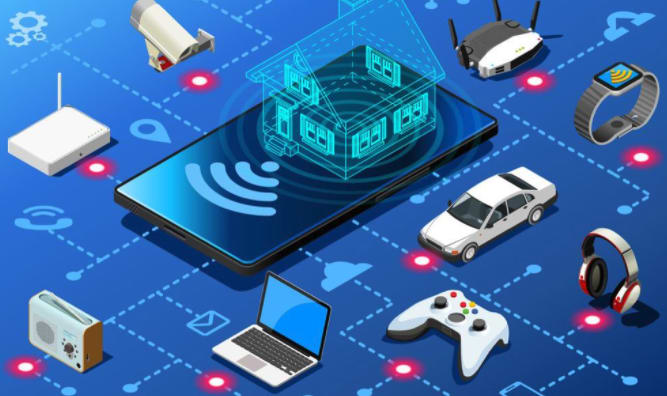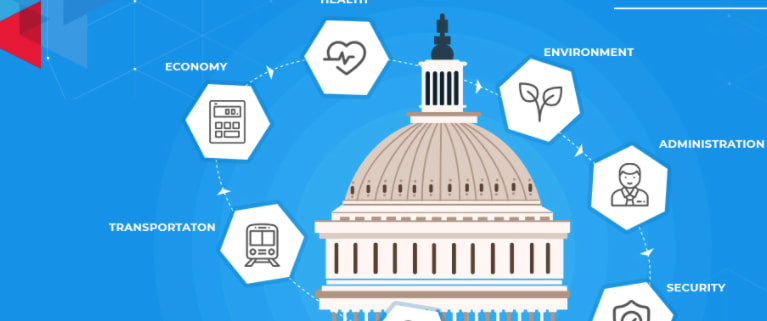What is IoT?
The Internet of Things (IoT) describes the network of physical objects—“things”—that are embedded with sensors, software, and other technologies for the purpose of connecting and exchanging data with other devices and systems over the internet. These devices range from ordinary household objects to sophisticated industrial tools.
Over the past few years, IoT has become one of the most important technologies of the 21st century. Now that we can connect everyday objects—kitchen appliances, cars, thermostats, baby monitors—to the internet via embedded devices, seamless communication is possible between people, processes, and things.
What technologies have made IoT possible?
- Low cost, low power sensor technology
Affordable and reliable sensors are making IoT technology possible for more manufacturers.
- Connectivity
A host of network protocols for the internet has made it easy to connect sensors to the cloud and to other “things” for efficient data transfer.
- Cloud computing platforms
The increase in the availability of cloud platforms enables both businesses and consumers to access the infrastructure they need to scale up without actually having to manage it all.
- Machine learning and analytics
With advances in machine learning and analytics, along with access to varied and vast amounts of data stored in the cloud, businesses can gather insights faster and more easily. The emergence of these allied technologies continues to push the boundaries of IoT and the data produced by IoT also feeds these technologies.
- Artificial intelligence (AI)
Advances in neural networks have brought natural-language processing (NLP) to IoT devices (such as digital personal assistants Alexa, Cortana, and Siri) and made them appealing, affordable, and viable for home use.
What industries can benefit from IoT?
Manufacturing
Manufacturers can gain a competitive advantage by using production-line monitoring to enable proactive maintenance on equipment when sensors detect an impending failure. Sensors can actually measure when production output is compromised. With the help of sensor alerts, manufacturers can quickly check equipment for accuracy or remove it from production until it is repaired. This allows companies to reduce operating costs, get better uptime, and improve asset performance management.
Automotive
The automotive industry stands to realize significant advantages from the use of IoT applications. In addition to the benefits of applying IoT to production lines, sensors can detect impending equipment failure in vehicles already on the road and can alert the driver with details and recommendations. Thanks to aggregated information gathered by IoT-based applications, automotive manufacturers and suppliers can learn more about how to keep cars running and car owners informed.
Transportation and Logistics
Transportation and logistical systems benefit from a variety of IoT applications. Fleets of cars, trucks, ships, and trains that carry inventory can be rerouted based on weather conditions, vehicle availability, or driver availability, thanks to IoT sensor data. The inventory itself could also be equipped with sensors for track-and-trace and temperature-control monitoring. The food and beverage, flower, and pharmaceutical industries often carry temperature-sensitive inventory that would benefit greatly from IoT monitoring applications that send alerts when temperatures rise or fall to a level that threatens the product.
Retail
IoT applications allow retail companies to manage inventory, improve customer experience, optimize supply chain, and reduce operational costs. For example, smart shelves fitted with weight sensors can collect RFID-based information and send the data to the IoT platform to automatically monitor inventory and trigger alerts if items are running low. Beacons can push targeted offers and promotions to customers to provide an engaging experience.
Public Sector
The benefits of IoT in the public sector and other service-related environments are similarly wide-ranging. For example, government-owned utilities can use IoT-based applications to notify their users of mass outages and even of smaller interruptions of water, power, or sewer services. IoT applications can collect data concerning the scope of an outage and deploy resources to help utilities recover from outages with greater speed.
Healthcare
IoT asset monitoring provides multiple benefits to the healthcare industry. Doctors, nurses, and orderlies often need to know the exact location of patient-assistance assets such as wheelchairs. When a hospital’s wheelchairs are equipped with IoT sensors, they can be tracked from the IoT asset-monitoring application so that anyone looking for one can quickly find the nearest available wheelchair. Many hospital assets can be tracked this way to ensure proper usage as well as financial accounting for the physical assets in each department.

General Safety
In addition to tracking physical assets, IoT can be used to improve worker safety. Employees in hazardous environments such as mines, oil and gas fields, and chemical and power plants, for example, need to know about the occurrence of a hazardous event that might affect them. When they are connected to IoT sensor–based applications, they can be notified of accidents or rescued from them as swiftly as possible. IoT applications are also used for wearables that can monitor human health and environmental conditions. Not only do these types of applications help people better understand their own health, they also permit physicians to monitor patients remotely.
References
https://searchengineland.com/6-ways-iot-will-make-local-search-smbs-scalable-283750
https://www.oracle.com/ca-en/internet-of-things/what-is-iot/
https://securelist.com/new-trends-in-the-world-of-iot-threats/87991/
https://intellias.com/how-can-the-automotive-industry-use-internet-of-things-iot-technology/
https://corporate.nvisionglobal.com/how-the-internet-of-things-is-improving-freight-transport-accountability/
https://intellias.com/how-can-the-automotive-industry-use-internet-of-things-iot-technology/
https://www.42gears.com/blog/how-iot-is-changing-retail-industry/
https://dreamziot.com/how-iot-is-changing-public-sector-services/
https://www.medgadget.com/2020/12/at-19-2-cagr-iot-in-healthcare-market-trends-industry-growth-share-and-research-development-report-to-2025-ge-healthcare-google-abbot-laboratories-apple.html
https://www.mdpi.com/2624-831X/2/3/24/htm










Top comments (0)